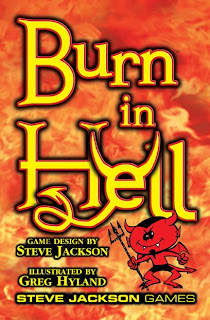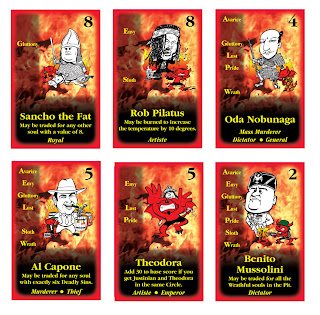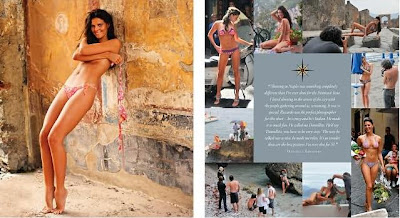

Estonia might not make the news very often, but like every other nation it has a rich musical tradition. And like every other place that I know about, it has a contemporary generation of performers re-interpreting their homeland's music in ways that suit the performers individually and bring the tradition into the present. Two examples of the modern folk music you can hear in Estonia today come from the bands
Vägilased and
Paabel, who have recently released albums respectively titled
Ema Õpetus and
Epöpoa.
Estonia bears more linguistic and cultural resemblance to Finland than to any of the other countries in Europe, so it is not surprising that their folk music has plenty of common ground with Finland. Indeed, the songs on
Ema Õpetus would fit in nicely on a Finnish folk sampler CD. Both countries have runo songs, for example, which (to make a very long story short) are highly repetitive working songs usually sung by one or more women. So anybody familiar with Finnish runo songs from bands like Värttinä or Hedningarna will recognize the style of many of Vägilased's songs immediately. The arrangements of Meelika Hainsoo (fiddle and vocals), Cätlin Jaago (flutes, pipes, Jew's harp, vocals), Toomas Valk (accordion), Jan Villeberg (guitar), Marti Tärn (bass), and Reigo Ahven (drums) would likewise not sound out of place coming from a Finnish band. The overall sound of
Ema Õpetus is a bit on the mellow side, in something of a smooth jazz vein. This isn't a bad thing, but if you're attracted to the edgier side of Nordic music you won't find much of that here. I did really like the first two songs on the album, though. "Vanaemamäng" has a good build-up of energy courtesy of a droning Jew's harp and some sharp, two-part female vocals, and the title song boasts similarly nice harmonies with a really cool Medieval-sounding instrumental break in the middle.
Paabel, by contrast, are more adventurous and experimental on
Epöpoa. Erko Niit (guitars and vocals), Tõnu Tubli (percussion), Sandra Sillamaa (winds and pipes), Arno Tamm (acoustic guitar and vocals), and Tanel Kadalipp (bass) combine traditional Estonian music with rock, jazz (in both the smooth, groove-oriented and the harsh, dissonant varieties), and lots of free-form improvisation. Their tracks tend to be on the long side (averaging over five minutes), and each one is punctuated in abrupt shifts in mood and tempo. Sometimes Paabel interrupt the flow with a jazzy instrumental, sometimes with percussion, sometimes with bizarre stream-of-consciousness vocalizing, and sometimes with a simple polska transitioning into a wailing sax and moaning voices over a disintegrating rhythm. Basically, anything goes. A live album,
Epöpoa reminds me of a performance by a similar Swedish folk band called Groupa at the 2001 Nordic Roots Festival in Minneapolis. I remember interviewing people in attendance during that weekend, and one person described the Groupa set as "such a cry and a chant that it seemed like they were calling the Nordic gods back down to earth." Perhaps that's an exaggeration, but there was definitely something primeval about that performance, and Paabel aim for a similar feel. The band have a few things going for them, especially Sillamaa's playing, but I feel that they keep trying to do too much on each piece, and that a little simplicity wouldn't hurt. They throw a lot of wild ideas on the wall, and while some of the ideas stick, they don't really discriminate between what does and what doesn't.
So both
Ema Õpetus and
Epöpoa have their strengths and weaknesses, but the two of them collectively manage to cover a very broad range of musical styles within the ostensibly narrow confines of Estonian folk music. I have a slight preference for Vägilased over Paabel on account of their being more melodic and easier on the ears, but the distinction has more to do with taste than a demonstrable difference in quality between the two.
Overall grades: Ema Õpetus B, Epöpoa B-
reviewed by Scott
Vägilased performing "Ema õpetus" at a festival. The video quality is not so good but you do get a sense of the band's sound.
Paabel performing "Sandra Epöpoa."

 Night of the Living Dead both broke many rules about horror while creating so many of its own. It's hard to think of another movie in the 1960s where a black man was the strong, resourceful hero and a white man was cowardly and selfish. Barbara, far from being a plucky heroine, spends most of the movie almost catatonic and helpless. Some of the protagonists' plans work, while others fail horribly. And the ending remains as chilling after numerous viewings as after the first one. Director George A. Romero creates true terror both as the humans try and survive and the zombies shuffle forth with mindless malevolence. A low budget doesn't keep the creatures from being terrifying, and there's social commentary that doesn't detract from the horrors.
Night of the Living Dead both broke many rules about horror while creating so many of its own. It's hard to think of another movie in the 1960s where a black man was the strong, resourceful hero and a white man was cowardly and selfish. Barbara, far from being a plucky heroine, spends most of the movie almost catatonic and helpless. Some of the protagonists' plans work, while others fail horribly. And the ending remains as chilling after numerous viewings as after the first one. Director George A. Romero creates true terror both as the humans try and survive and the zombies shuffle forth with mindless malevolence. A low budget doesn't keep the creatures from being terrifying, and there's social commentary that doesn't detract from the horrors.




















